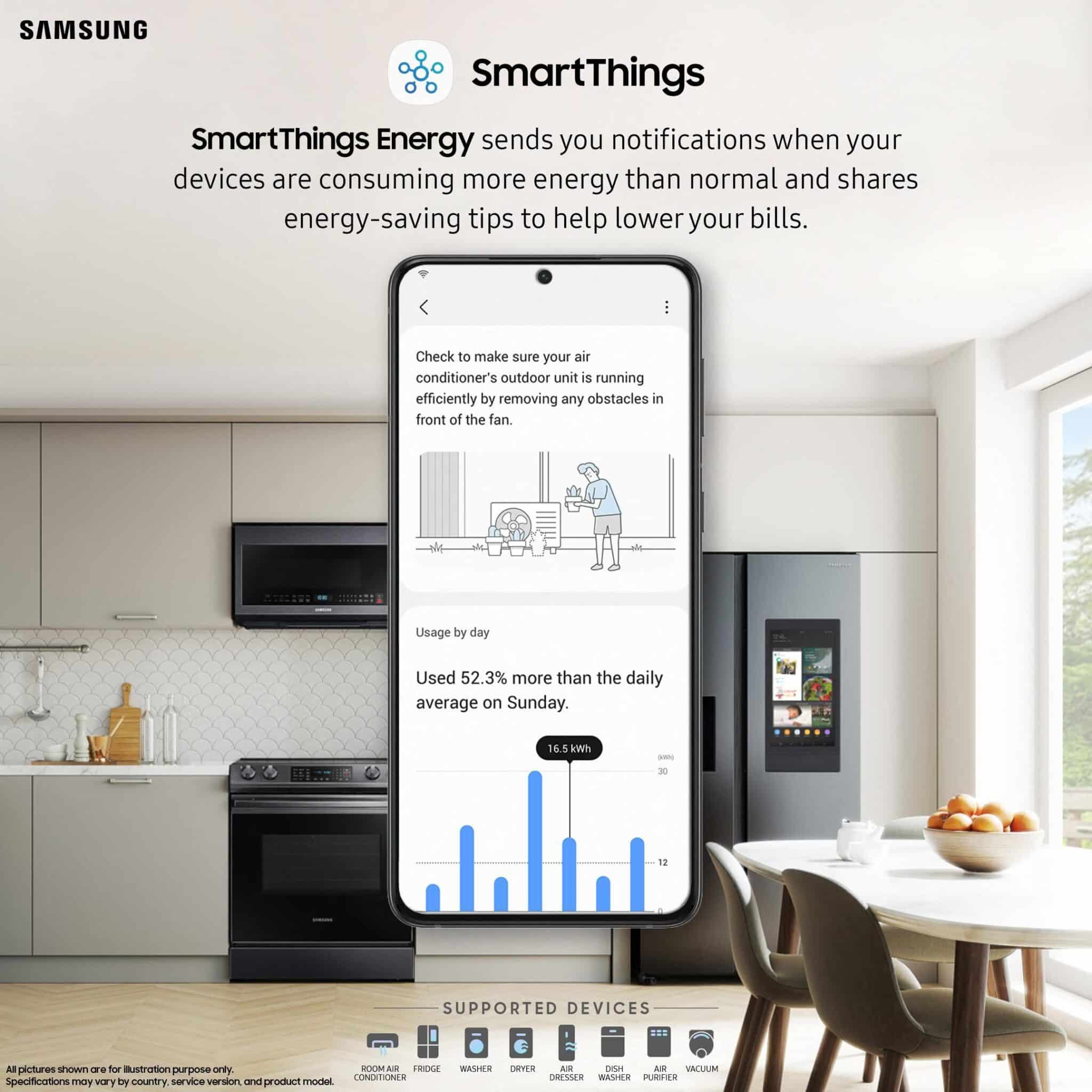

Samsung
As the coronavirus pandemic keeps more people at home and awareness of the climate crisis increases, more and more people are justifiably concerned about their household energy consumption.
That’s why Samsung has launched SmartThings Energy today, a new addition to its SmartThings app that allows customers to monitor and control the energy use of their Samsung appliances and HVAC systems.
“People are spending more time at home and using their appliances more frequently, driving a need for larger capacity and better energy efficiency,” Vice President and Head of IoT Business group at Samsung Electronics Chanwoo Park said in an announcement. “Our consumers want to be part of building a better, more eco-friendly tomorrow, and we are proud to help them achieve that vision by offering a more energy-efficient smart home experience.”
SmartThings Energy helps users save energy in three key ways.
- Monitor: Users can see how much energy they are using in total or for each appliance. They can also compare their energy consumption to target goals or to their previous monthly usage.
- Data: Charts reveal how much energy each device is using. The app addition also includes tips for saving energy on each appliance, such as not stuffing the fridge too much to enable cool airflow.
- Alerts: SmartThings Energy will let users know when they leave a device on while away from home or are going over their energy-use target.
SmartThings Energy isn’t the only program that enables consumers to track their energy use, CNET pointed out. There are smart thermostats like Nest and Ecobee and companies like Sense that will install a monitor into your breaker panel.
Samsung argues that “SmartThings Energy is unique because it offers the most comprehensive real-time energy consumption data on the market and addresses challenges related to major energy-consuming appliances like air conditioners and home appliances, head-on.”
However, CNET’s Megan Wollerton wrote that it had one major limitation.
“You’d have to have only compatible Samsung appliances in your home for SmartThings Energy to provide that same degree of value,” as other options, she wrote.
However, she also pointed out that SmartThings Energy is free, so if you do have Samsung appliances, you can only save by trying it out. Samsung also says it hopes to expand SmartThings to include WWST partners and work with other new partners who focus on energy efficiency.
“We hope to build a suite of new advanced features to generate more savings for SmartThings users,” Park said in the announcement. “By combining the analytical features of SmartThings Energy with Samsung energy-efficient products, we are changing the game for consumers and empowering them to make smarter decisions about their energy consumption.”
As of 2012, the U.S. residential sector accounted for 21 percent of the country’s energy consumption and 20 percent of its greenhouse gas emissions, according to Energy Information Administration data. This means that, no matter which tool you choose, reducing home energy use is a good way to save both money and the planet.
“The average U.S. family can spend $2,000 a year on energy bills, which means reducing your home energy use is the single most effective way to save money and reduce your home’s contribution to climate change,” the Center for Climate and Energy Solutions advised.
- 12 Ways to Save Energy at Home - EcoWatch
- The Best Smart Home Devices (Save Energy) - EcoWatch
- Men's Consumer Habits Cause More Climate Emissions Than Women's, Study Finds
- 10 Ways to Save Water at Home - EcoWatch

 233k
233k  41k
41k  Subscribe
Subscribe 

